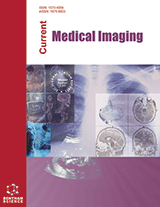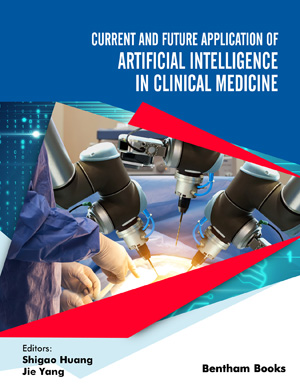
Abstract
Background: Klippel-Trenaunay syndrome (KTS) is a rare congenital disease that mainly involves blood vessels and is characterized by the presence of capillary malformations (port wine stains), varicose veins, soft tissue and/or bone hypertrophy.
Case Presentation: We report a 28-year-old man who was diagnosed 20 years ago with Klippel-Trenaunay syndrome. Approximately 3 years ago, he found enlarged masses on both upper extremities and a new dark red mass that was pathologically diagnosed as cavernous haemangioma appeared on the right index finger.
Conclusion: KTS is a rare and potentially multisystem disease requiring multidisciplinary management for which imaging examination is an important auxiliary diagnostic method. Various complications may occur during its development, so regular follow-up is required to prevent serious accidents.
Keywords: Klippel-Trenaunay syndrome, Limb hypertrophy, Port wine stain, Vascular malformation, Blood vessels, Haemangioma.
Current Medical Imaging
Title:Subcutaneous Cavernous Haemangioma in a Patient with Klippel-Trenaunay Syndrome: A Case Report
Volume: 20
Author(s): Yixin Liu, Ling Liu*, Xia Liu, Rengui Liu, Chunmao Cui and Huaize Cao
Affiliation:
- Department of Radiology, The First Affiliated Hospital of Dali University, Dali, Yunnan, People’s Republic of China
Keywords: Klippel-Trenaunay syndrome, Limb hypertrophy, Port wine stain, Vascular malformation, Blood vessels, Haemangioma.
Abstract:
Background: Klippel-Trenaunay syndrome (KTS) is a rare congenital disease that mainly involves blood vessels and is characterized by the presence of capillary malformations (port wine stains), varicose veins, soft tissue and/or bone hypertrophy.
Case Presentation: We report a 28-year-old man who was diagnosed 20 years ago with Klippel-Trenaunay syndrome. Approximately 3 years ago, he found enlarged masses on both upper extremities and a new dark red mass that was pathologically diagnosed as cavernous haemangioma appeared on the right index finger.
Conclusion: KTS is a rare and potentially multisystem disease requiring multidisciplinary management for which imaging examination is an important auxiliary diagnostic method. Various complications may occur during its development, so regular follow-up is required to prevent serious accidents.
Export Options
About this article
Cite this article as:
Liu Yixin, Liu Ling*, Liu Xia, Liu Rengui, Cui Chunmao and Cao Huaize, Subcutaneous Cavernous Haemangioma in a Patient with Klippel-Trenaunay Syndrome: A Case Report, Current Medical Imaging 2024; 20 : e15734056251193 . https://dx.doi.org/10.2174/0115734056251193231016042812
| DOI https://dx.doi.org/10.2174/0115734056251193231016042812 |
Print ISSN 1573-4056 |
| Publisher Name Bentham Science Publisher |
Online ISSN 1875-6603 |
Call for Papers in Thematic Issues
Advancements and Applications of Photon Counting CT: Transforming Imaging Precision and Quantification
Photon Counting Computed Tomography (CT) represents a transformative advancement in medical imaging technology, offering unprecedented levels of precision and diagnostic capability. This special issue will explore the latest innovations and applications of photon counting CT, highlighting its advantages over traditional energy-integrating detectors. The scope includes an in-depth examination of its ...read more
Advancements in Deep Learning based Medical Image and Signal Processing for Healthcare Applications
The accurate predication from medical data (signals and images) analytics will be achieved through the use of cutting-edge AI tools for tailoring medical treatment to each patient. When the agents are done analysing the user's health data, the user can consult with the agents to receive advice and the most ...read more
AI-Driven Diagnostics in Radiology and Medical Imaging
Medical imaging data, such as X-rays, MRIs, ultrasounds, CT scans, and DXAs, can be analysed by AI algorithms to help healthcare professionals identify and diagnose diseases more rapidly and accurately. Among the most cutting-edge applications of artificial intelligence (AI) in healthcare are imaging-related applications like cancer detection. AI could revolutionise ...read more
Applying medical image processing techniques for early cancer detection in mammograms
Breast cancer survival and successful treatment are significantly boosted by early identification. Breast cancer screening is most commonly accomplished with mammography. The radiologist's experience and the image quality, among several other factors, might affect how well a mammogram is interpreted. Enhancing mammography analysis and increasing cancer early detection are made ...read more
Related Books
 18
18
- Author Guidelines
- Graphical Abstracts
- Fabricating and Stating False Information
- Research Misconduct
- Post Publication Discussions and Corrections
- Publishing Ethics and Rectitude
- Increase Visibility of Your Article
- Archiving Policies
- Peer Review Workflow
- Order Your Article Before Print
- Promote Your Article
- Manuscript Transfer Facility
- Editorial Policies
- Allegations from Whistleblowers
Related Articles
-
Nenatal Drug Induced Nephrotoxicity : Old and Next Generation Biomarkers for Early Detection and Management of Neonatal Drug-Induced Nephrotoxicity, with Special Emphasis on uNGAL and on Metabolomics
Current Medicinal Chemistry Congenital Abdominal Aortic Aneurysm: Presentation, Etiology, Diagnosis and Management
New Emirates Medical Journal Apoptosis: Its Functions and Control in the Ocular Lens
Current Molecular Medicine Novel Biomarkers for Posterior Urethral Valve
Current Medicinal Chemistry The Role of MDCT in Craniocervical Junction Pathologies: Pictorial Review
Current Medical Imaging Metabotropic Glutamate Receptors and Interacting Proteins in Epileptogenesis
Current Neuropharmacology Pseudoaneurysm of a Lumbal Artery: CT-guided Treatment with Nonadhesive Liquid Embolic Agent
Current Medical Imaging Anti-obesity Properties of Phytochemicals: Highlighting their Molecular Mechanisms against Obesity
Current Medicinal Chemistry Zinner Syndrome: Radiologic Diagnosis in a Rare Case
Current Medical Imaging Pathophysiology of the Vascular Wall and its Relevance for Cerebrovascular Disorders in Aged Rodents
Current Neurovascular Research Von Willebrand Factor and Cardiovascular Disease: From a Biochemical Marker to an Attractive Therapeutic Target
Current Vascular Pharmacology Renin-Angiotensin System in Central Nervous System Diseases and its Interaction with COVID-19
Current Medicinal Chemistry Inhibition of RET Activated Pathways: Novel Strategies for Therapeutic Intervention in Human Cancers
Current Pharmaceutical Design Neurocognitive Monitoring and Care During Pediatric Cardiopulmonary Bypass — Current and Future Directions
Current Cardiology Reviews Arterial Ischemic Stroke in Neonates and Children: Review and Current Issues
Current Pediatric Reviews Recurrent Pregnancy Losses
Current Women`s Health Reviews Buccal Delivery of Methimazole as an Alternative Means for Improvement of Drug Bioavailability: Permeation Studies and Matrix System Design
Current Pharmaceutical Design Towards Characteristics of Photodynamic Drugs Specifically Aimed at Microvascular Diseases
Mini-Reviews in Medicinal Chemistry New Proposals for Testing Drugs with IKr-Blocking Activity to Determine Their Teratogenic Potential
Current Pharmaceutical Design Is the Hepatic Factor a miRNA that Maintains the Integrity of Pulmonary Microvasculature by Inhibiting the Vascular Endothelial Growth Factor?
Current Cardiology Reviews









